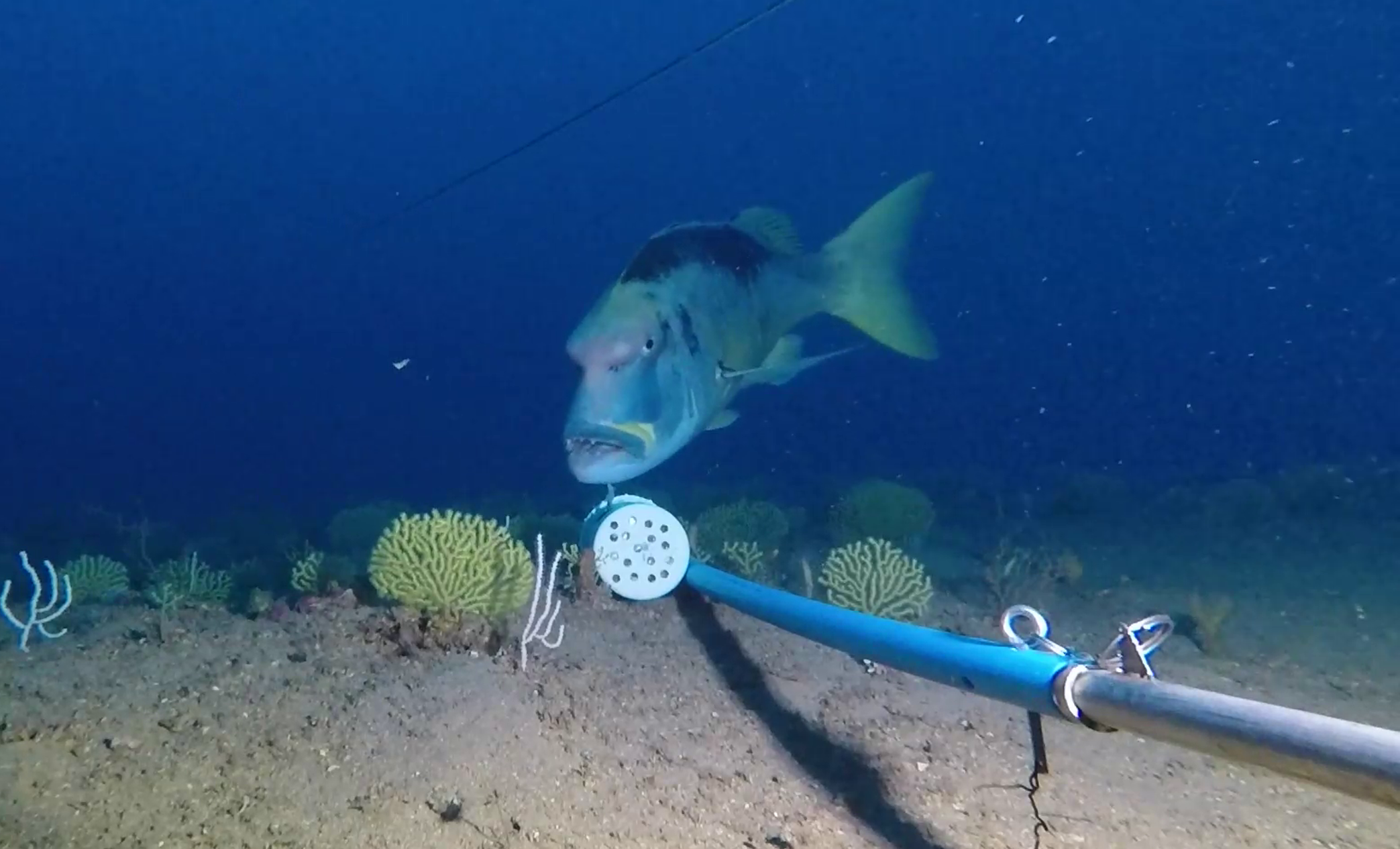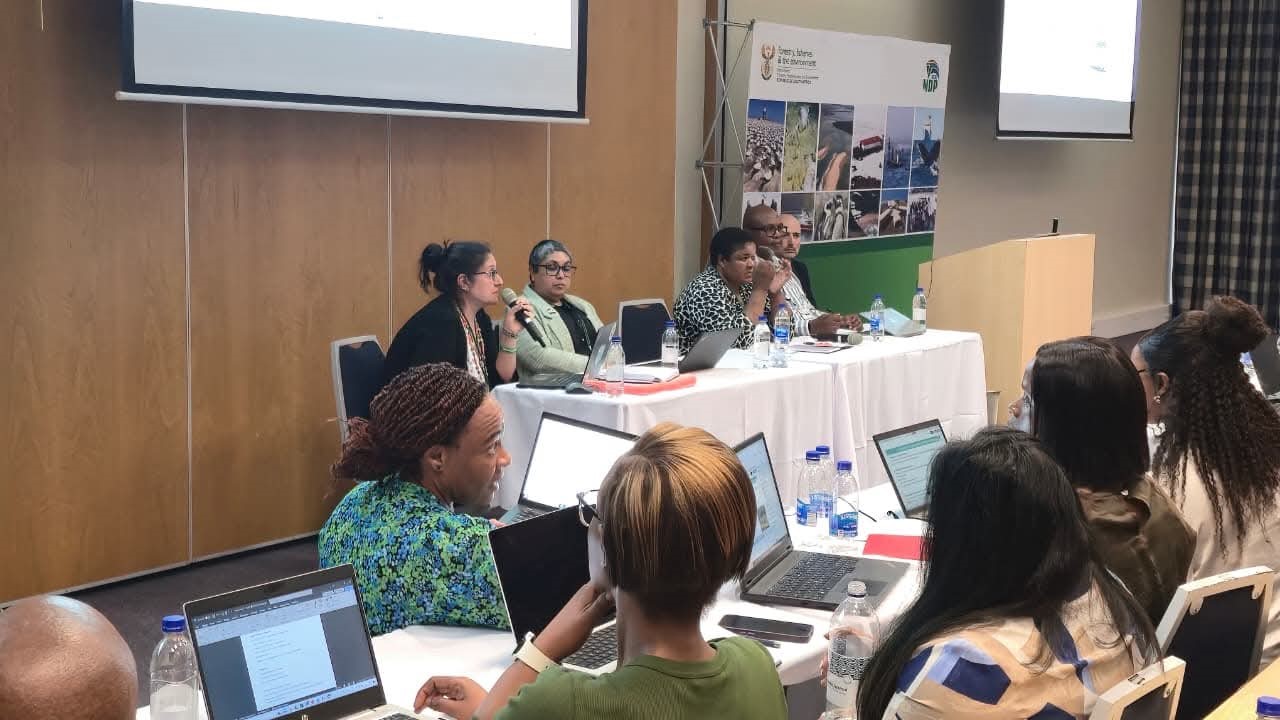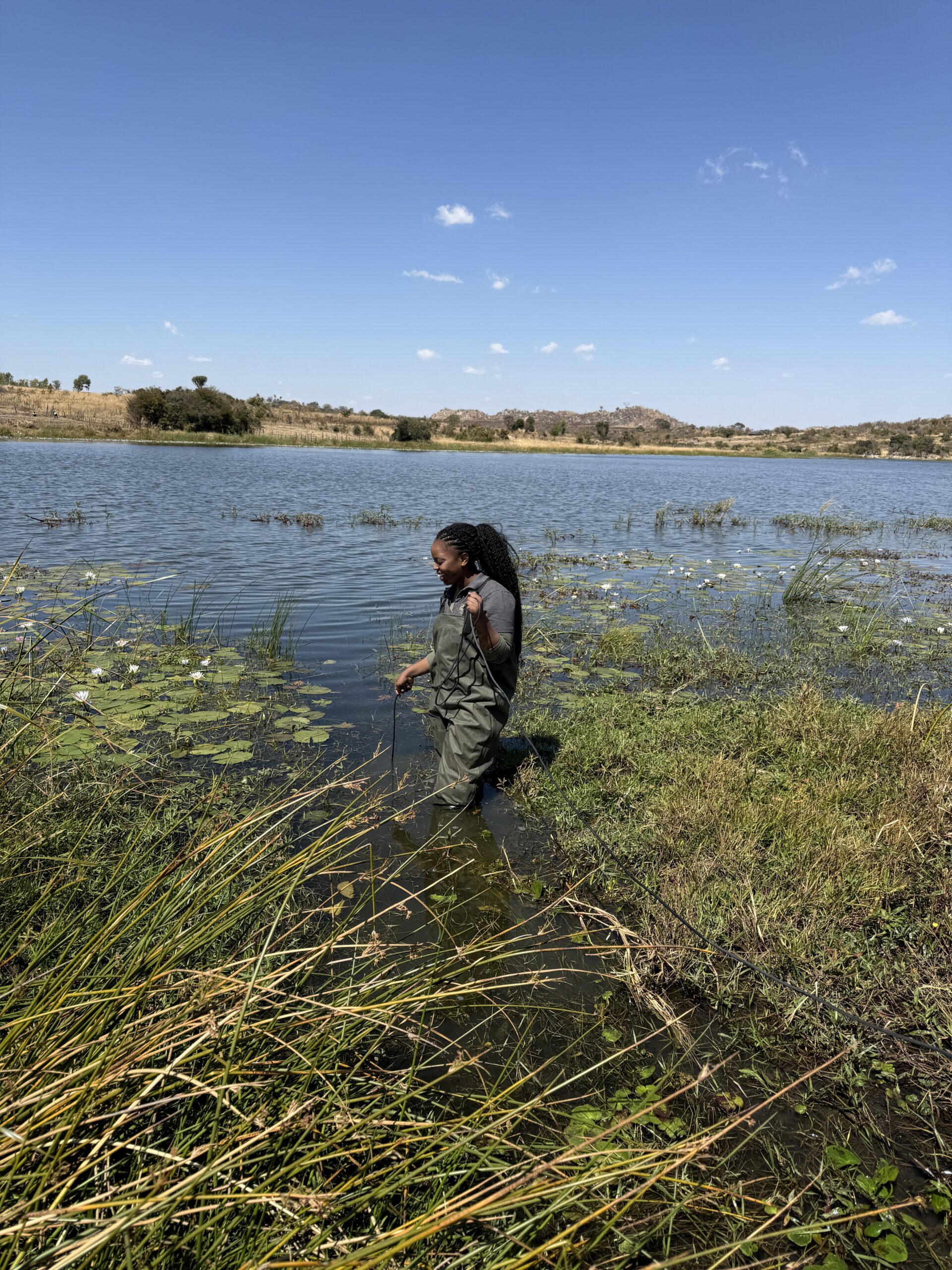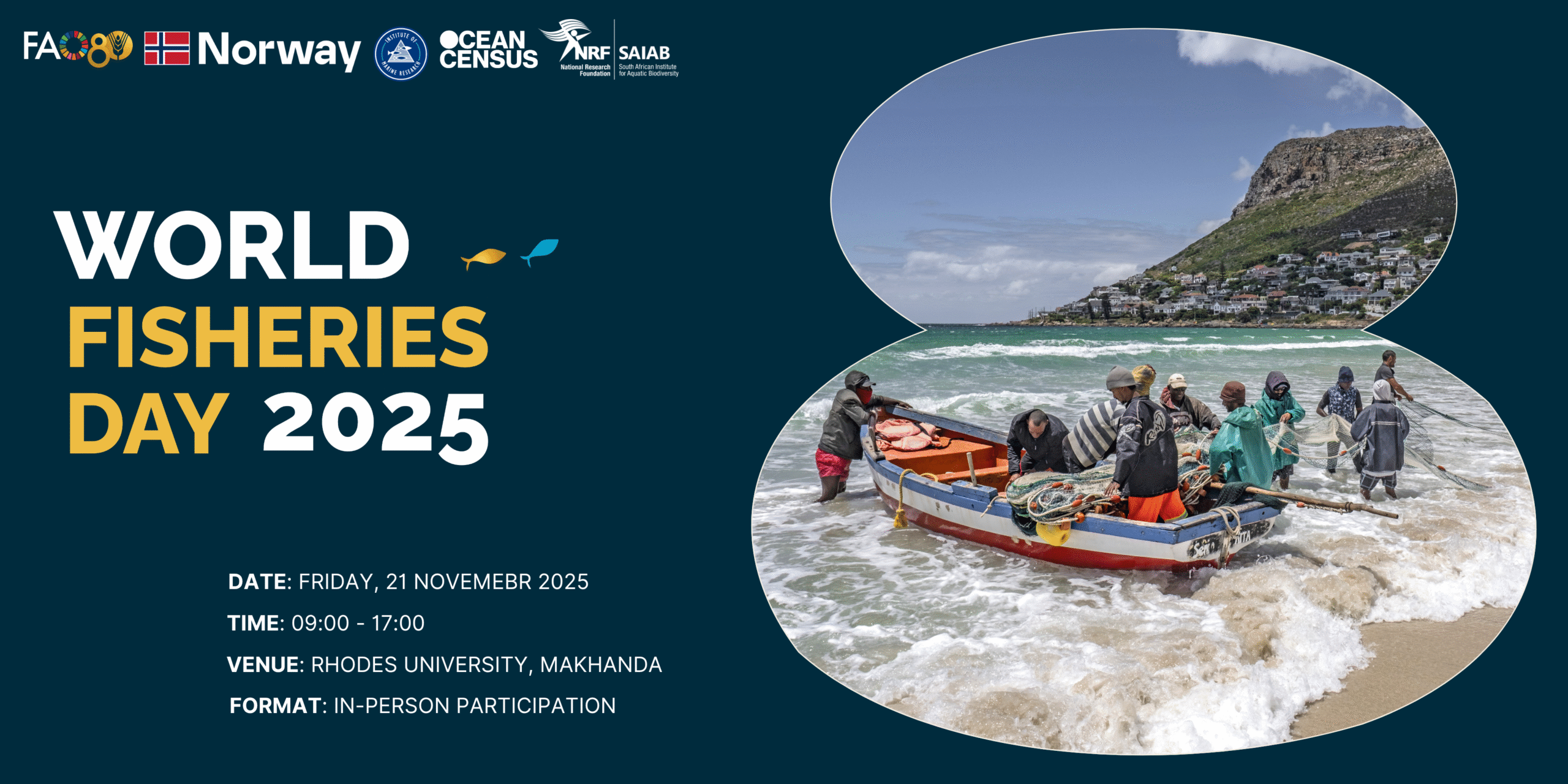By: Kaylee Smit
World Marine Protected Areas (MPA) Day is a global celebration aimed at raising awareness about the importance of protecting our oceans and the vital ecosystems they support. This year marked the 5th annual MPA Day – the biggest yet – with over 100 events hosted across 31 countries on six continents. South Africa was once again an active contributor to the global programme, and one of the highlights taking place in the coastal city of East London.
On Saturday, 2 August, more than 110 visitors attended a vibrant MPA Day event at the East London Museum, hosted by the NRF-South African Institute for Aquatic Biodiversity (NRF-SAIAB), and supported by multiple collaborating organisations. The event coincided with an international Baited Remote Underwater Videos Systems (BRUVs) and deep-sea lander training workshop, also facilitated by NRF-SAIAB, which brought together marine scientists and collaborators from around the world.
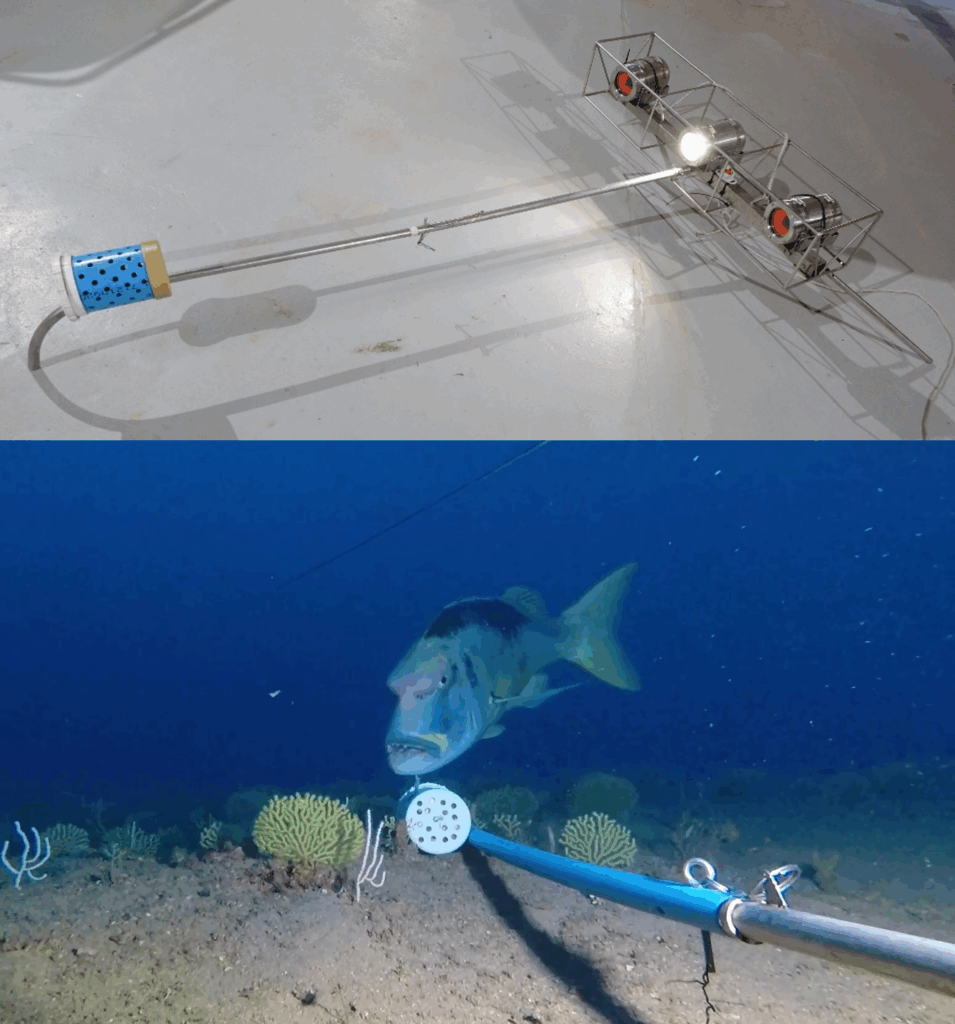
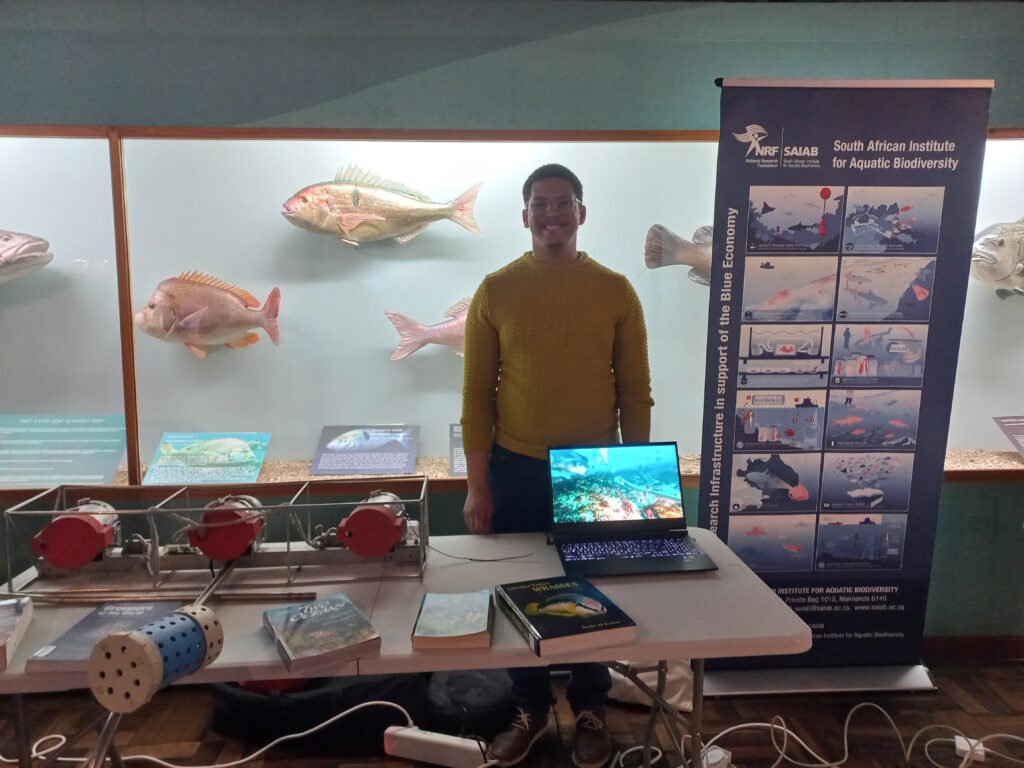
Left photo: An example of a Baited Remote Underwater Stereo-Video System (Stereo-BRUVs). Bottom: A big red steenbras (copper steenbras, Petrus rupestris) captured on the Stereo-BRUVs.
Right photo: PhD student, Luther Adams, manning the NRF-SAIAB stand.
Through NRF-SAIAB’s Marine Remote Imagery Platform, stereo-BRUVs are used throughout South Africa and the Western Indian Ocean to assess fish populations and their associated habitats. To date, more than 1000 stereo-BRUVs samples have been collected from South Africa alone, providing crucial data to assess MPA effectiveness and inform sustainable management decisions. Captivating underwater footage from these systems showcased the incredible marine life in East London’s Amathole MPAs, as well as other regions across the globe.
The museum was buzzing with activity as guests explored exhibition stands from organisations such as the National Geographic Society, the Save Our Seas Foundation (SOSF), SpeSeas (an NGO from Trinidad and Tobago), Projeto Vito (Cape Verde) as well as Talma Consultancy ( Seychelles). Interactive displays and underwater video highlights offered the public a rare glimpse into the science and technology used to study and protect ocean life.
A major attraction was the SOSF’s virtual reality (VR) headsets, which proved popular with both adults and children, allowing them to explore marine ecosystems in 3D without getting wet. Lisa Cloete of Cintsa East shared her excitement:
“For those of us who don’t dive and don’t get to see under the ocean, the VR experience was absolutely astounding! Being able to stand underneath a 3-meter manta ray swimming in the wild while keeping your clothes dry is something everyone should experience at least once! Learning what our marine scientists are doing right off our coastline and what they are finding is also so exciting!”
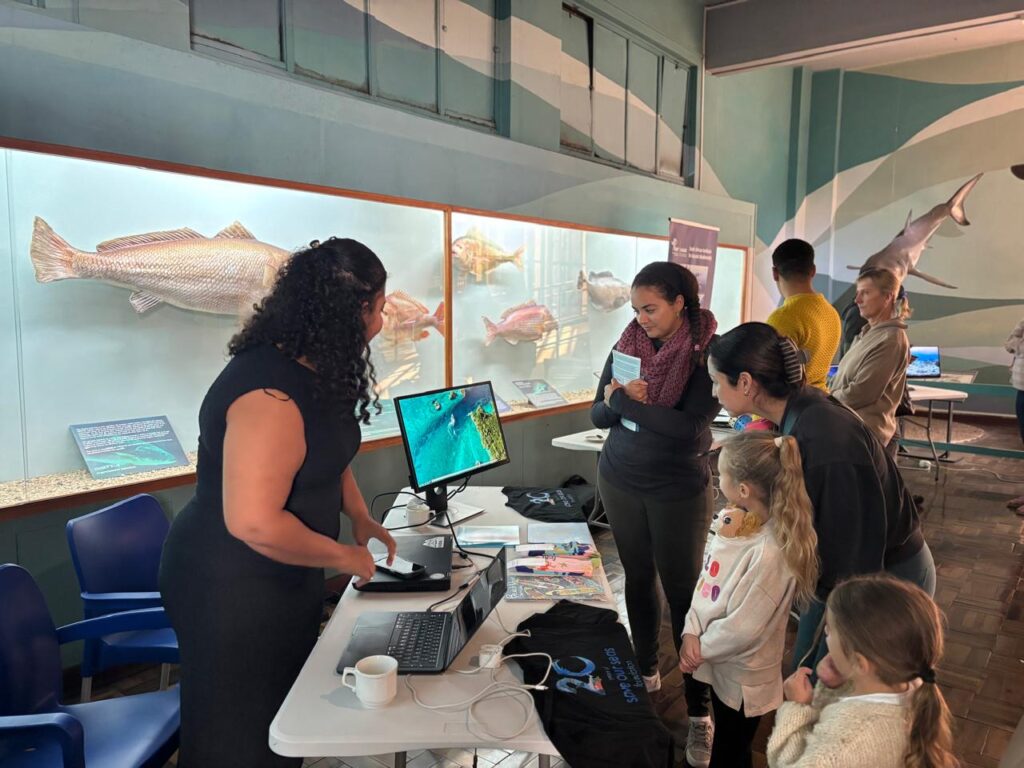
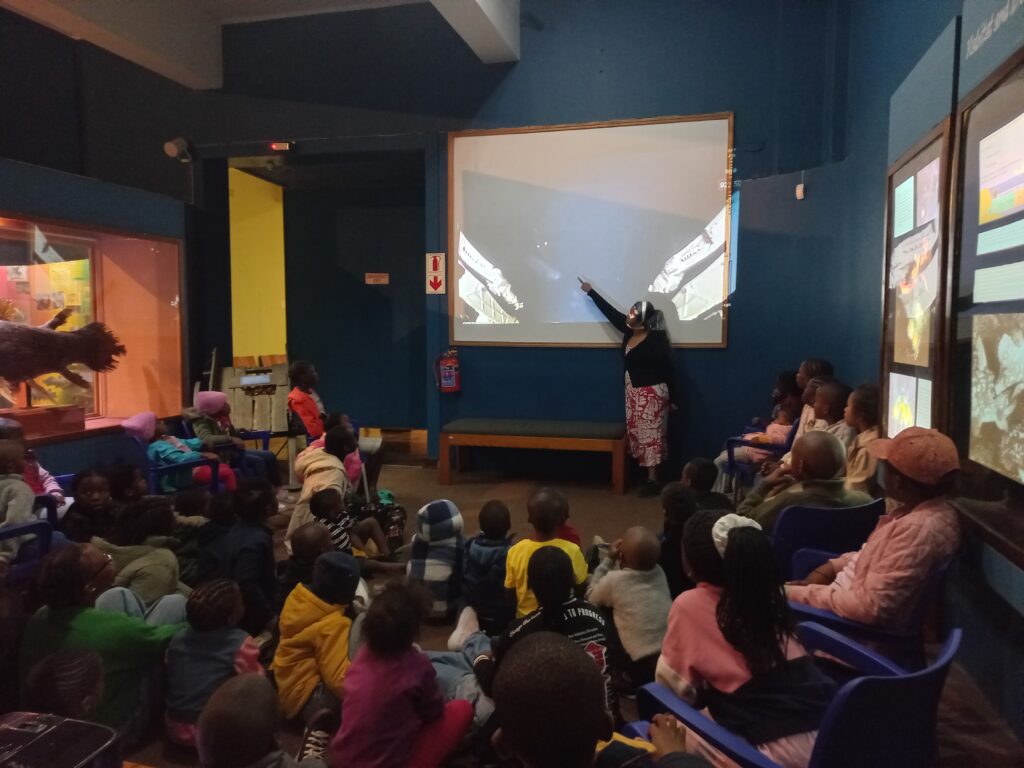
Left photo: Laura Montano (Seychelles) and Vanessa Lopes (Cape Verde) showcasing their marine research and sharing outputs from the Save our Seas Foundation.
Right photo: Sheena Talma from Seychelles demonstrating her underwater submersible experience to some local school children.
The event served as a powerful reminder of the importance of ocean conservation, engaging the public and highlighting the collaborative efforts required to protect South Africa’s rich marine heritage.
Dr Kaylee Smit from the NRF-SAIAB expressed her delight at seeing such a diverse mix of attendees – from recreational fishers and families, to Sunday School children – united in their eagerness to learn about MPAs.
Sheena Talma, Director of Talma Consultancy and a National Geographic Explorer, reflected on the importance of making the ocean accessible to everyone. She emphasised that showcasing our ocean in creative ways, and using technology to do so, is key to fostering a sense of shared ownership and responsibility for the health and stewardship of our marine environment.
As part of the global celebrations, the East London event brought pride to the Eastern Cape, putting the region firmly on the map and shining a light on the oceans we all depend on.
